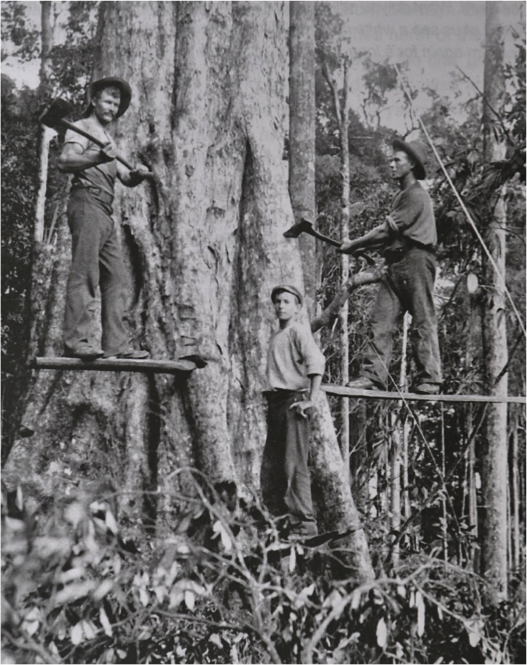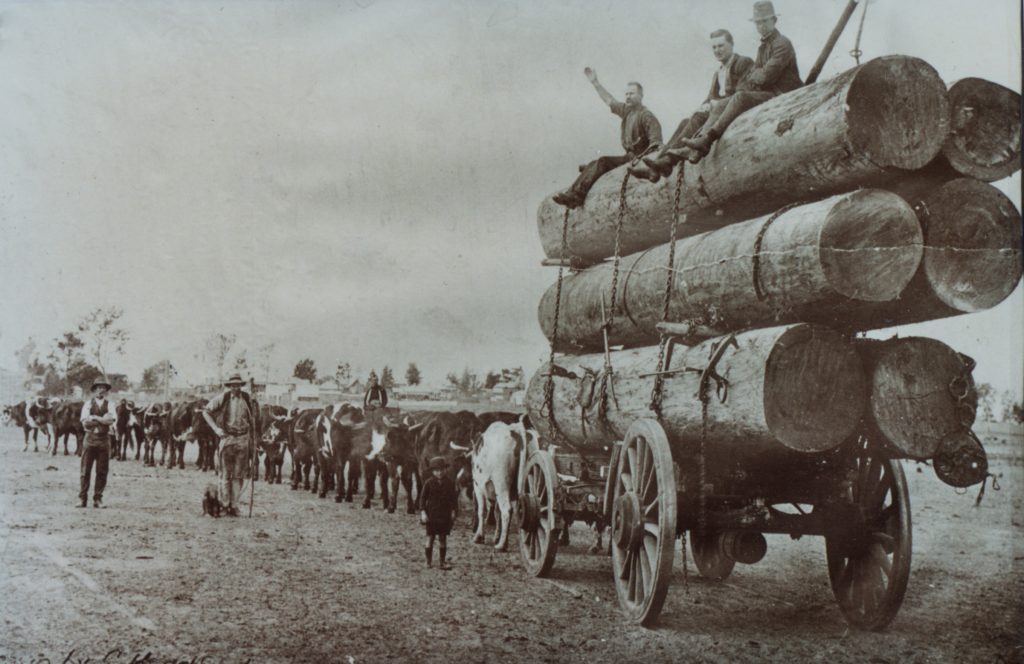Site 10: Cedar Getters
PREV NEXT
Until the 1860’s the Byron Bay area was covered by sub-tropical forest; part of the “Big Scrub”. This diverse forest contained huge trees, bushes, vines, ferns and plants that had adapted over the last 25,000 years to a warming, post ice-age climate. It supported an abundance of birds, animals and fish and provided shelter, food and significant places for the local Arakwal Aboriginal people.

Cedar cutters (Source RTRL)
The first cedar-getters arrived in the area in the late 1850’s with the first camps in the Byron Bay area recorded in the late 1860’s. They and their aboriginal scouts sought the large, straight-trunked, cedars that yielded beautiful, hard, red, termite-resistant wood. They stood on springboards notched into the trunk above the buttress roots to reach the clean straight trunk. Using axes and saws it took several hours of very hard work before the giant would fall. The branches were removed, the butt branded and the log was transported to the coast. Either bullocks “snigged” the log to the coast or it was rafted down the rivers.

Bullock teams (Source RTRL)
At Byron Bay logs were “surf-loaded”. Bullock teams towed them out through the surf either at “The Pass” or “Cosy Corner” to be winched to and loaded on ships anchored close to the beach. They were then transported to the timber markets of Australia and the world. From 1888 logs were loaded on to ships moored at Byron Bay’s “old” jetty and after 1894 could be transported to markets by rail. The first sawmill in Byron Bay built in 1891 converted logs into more valuable timber. In 1908 the export of logs ceased and timber exports became insignificant after WW1. Many cedar-getters cleared land and became farmers.
The impacts of the cedar-getters on the forests and eco-systems of the “Big Scrub” are obvious. As the first Europeans to make significant contact with the local Aboriginals, they impacted significantly their health, culture, community structures, and traditions.
In the 1980’s parks and reserves were formed to protect remaining forest and allow regeneration.